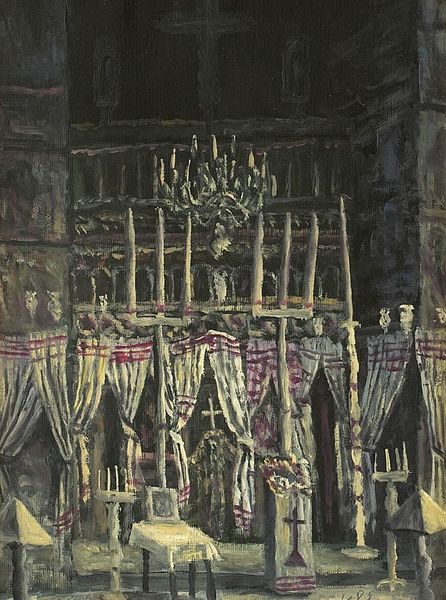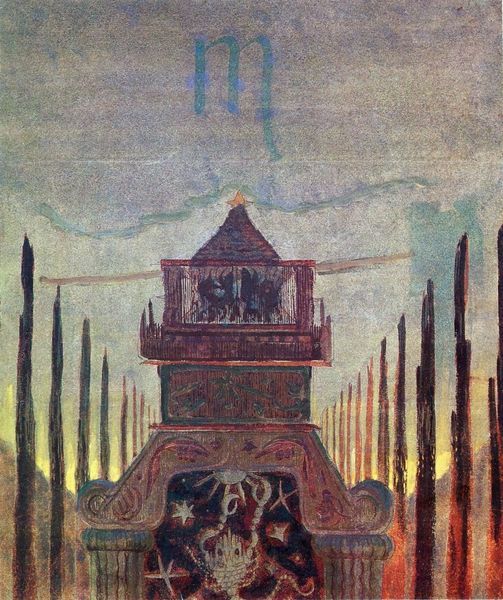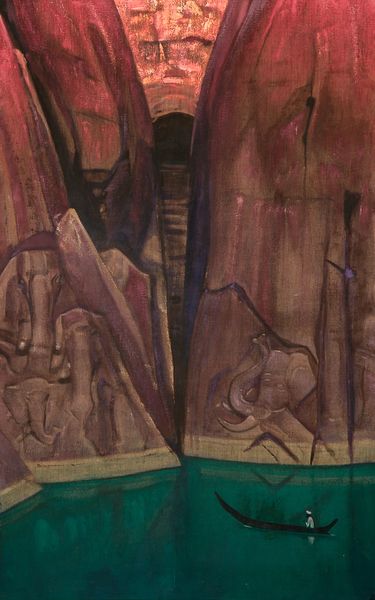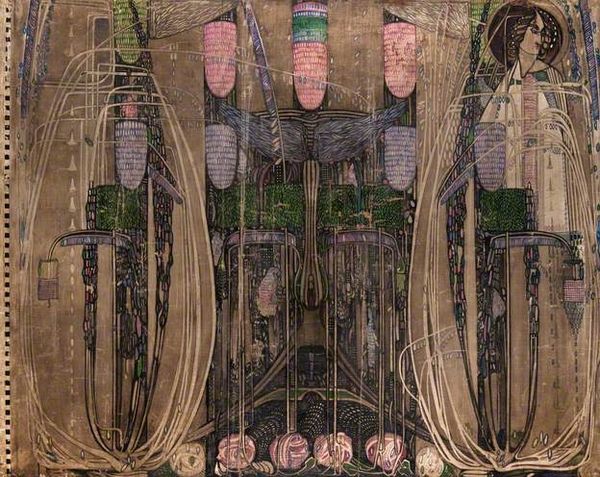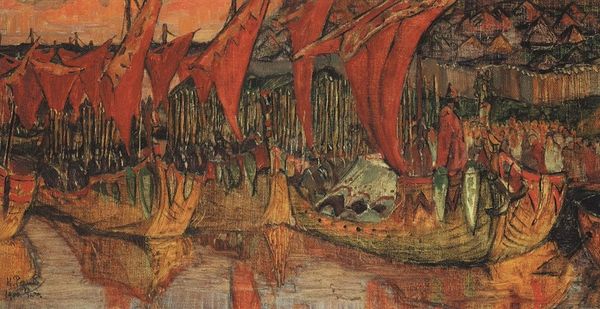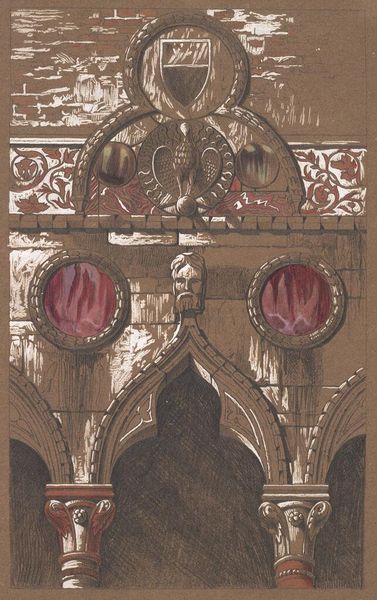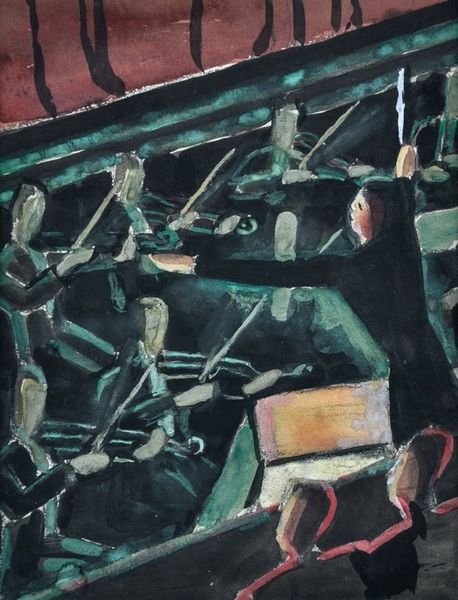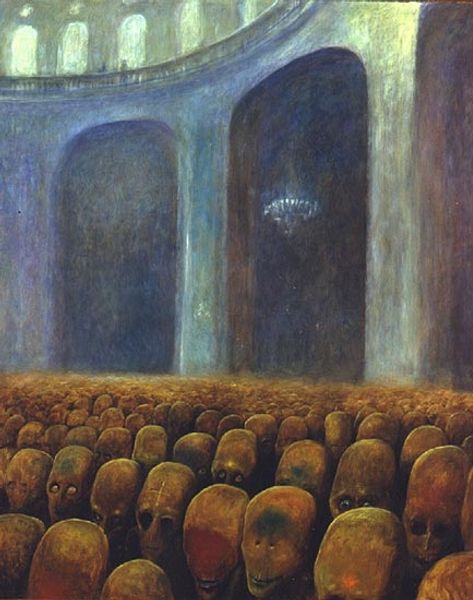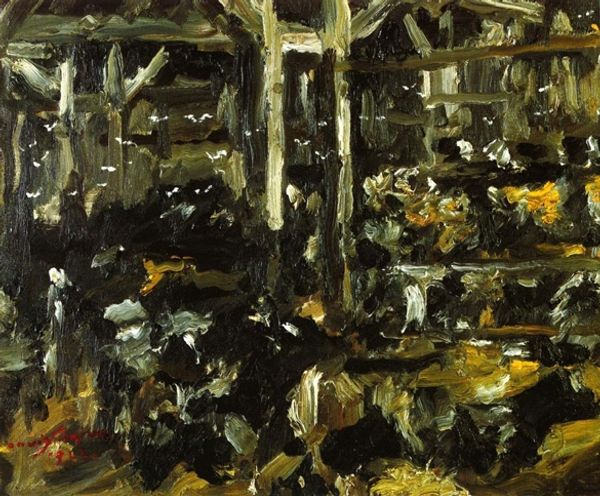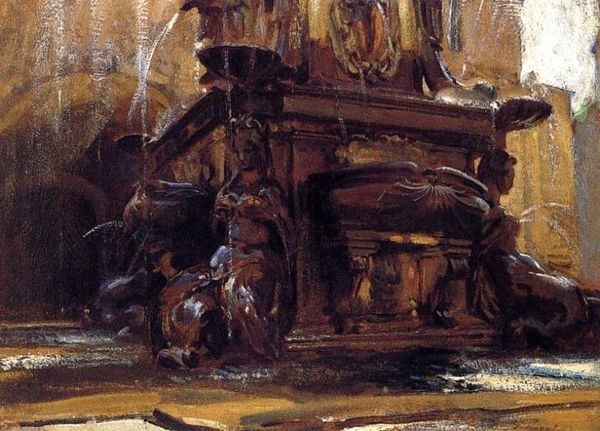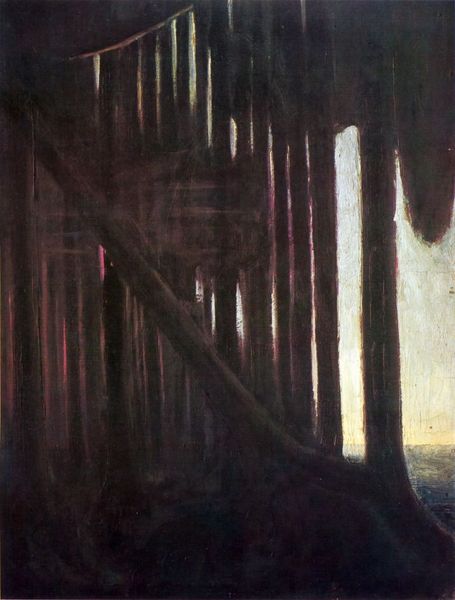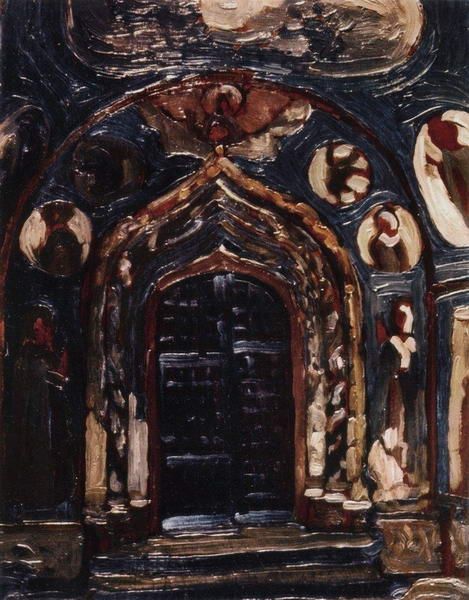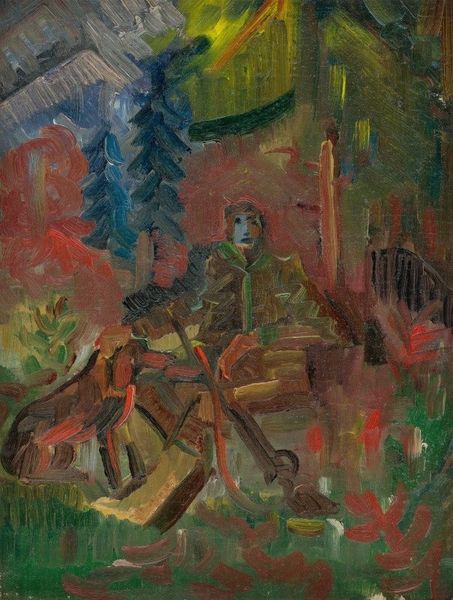
painting, oil-paint, impasto
#
painting
#
oil-paint
#
gothic
#
impasto
#
mixed media
#
watercolor
Copyright: Public Domain: Artvee
Editor: Here we have "Cathedral Interior," an oil painting, maybe even mixed media, by Ramón Casas. It feels like a shadowy space, dominated by towering structures. The light filtering through suggests something majestic, yet… oppressive. What do you see in this piece, particularly when considering its historical context? Curator: This piece draws us into the complex relationship between power, religion, and societal structures. Gothic cathedrals were monumental projects, weren't they, reflecting immense religious authority, but also built upon the labor of a largely disenfranchised population. Look at the impasto, that almost frenzied application of paint; could that be read as Casas wrestling with this legacy? Editor: That's interesting. I hadn’t considered the brushstrokes as anything other than stylistic. But do you think Casas is explicitly critiquing religion, or is it more nuanced? Curator: I think it's far more nuanced. Notice the stained glass barely visible. Cathedrals, while symbols of established power, also offered a unique space of social mobility. It may be hinting at both critique and potential – almost the push and pull of social dynamics within the Church. Are those figures in the foreground attending mass or are they part of the performance of power that cathedrals provided? Editor: It’s unsettling how little is revealed, those shapes may be kneeling in devotion, or simply trapped in silhouette. Thanks, seeing that tension between light and shadow and those anonymous forms in the pews… It definitely makes the work much richer. Curator: And the way the formal qualities mirror that push and pull makes the art resonate with so many related issues – class, identity, aspiration. That, for me, is the heart of activist interpretation – how the visual echoes social experience.
Comments
No comments
Be the first to comment and join the conversation on the ultimate creative platform.
